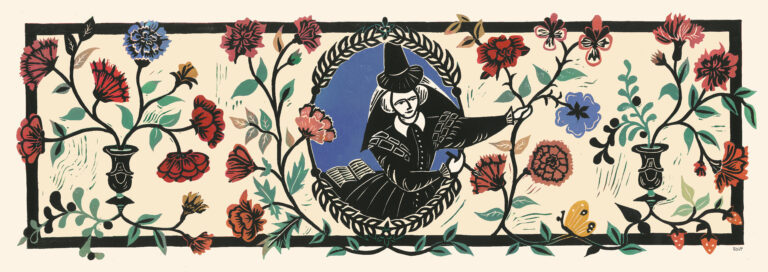Rewriting the Script
The works and words of Esther Inglis

During the reign of King James VI/I, the daughter of two French refugees found safety in Scotland and became known within the royal court for the beauty of her handwriting. She earned money for her family by making beautiful books for people that she hoped would become her patrons. She painted the first known self-portraits by a woman in Scotland or England, and could write in more styles than anyone else at the time. Her name was Esther Inglis.
Born in France to Huguenot (French Protestant) parents, Esther Inglis grew up in Edinburgh a highly educated and literate woman, bilingual in French and Scots and familiar with English. She became known in royal, scholarly, and scribal circles for the remarkable books which she made by hand – writing their words, illuminating their pages, and embroidering their covers. Sixty-three manuscripts produced by Inglis are known today – these books are often miniature and one manuscript might be written in forty different styles of script. That such books could be produced by a woman living in the late-sixteenth and early-seventeenth centuries is truly exceptional.
In the 400th anniversary of her death, this exhibition draws together the manuscripts of Esther Inglis which are now dispersed across libraries throughout the globe, focussing on the different artistic spaces into which she enters as a Franco-Scottish scribe, artist, and craftswoman. Beginning in Edinburgh and telling Inglis’ story through her surviving manuscripts, this digital exhibition offers, for the first time, the chance to bring Esther Inglis and her manuscripts home.
